Bird work is alluring, with large-dollar accounts and the promise of additional work in related areas. But without proper training, it can be a costly misstep for a pest management company.
Bird control is the epitome of niche work and extremes. Many people love birds and keep them as pets or nourish their feathered friends with backyard feeders.
At the other extreme, property damage and loss from birds is impossible to calculate. Nobody wants bird poop on their tomatoes left by sparrows flying through the local big box store, and no one likes to wade through pigeon droppings as they exit their front door. Emotions can run high. The balance between health, safety, property loss and damage (especially to food) is a vastly different conversation when the subject is insects rather than birds. Understanding this underlying public sentiment is important for pest management professionals (PMPs) because best efforts and service can be interfered with and grossly misunderstood.
Start with training
Before offering bird work as a service, invest in a proper training program. Many do-it-yourself and product videos are available and may be useful later on, but the foundation of the service should be established under the direction of a competent professional, not from merely reading an article, hearing a talk or watching a video. These may be elements of the training, but start with a comprehensive course first.
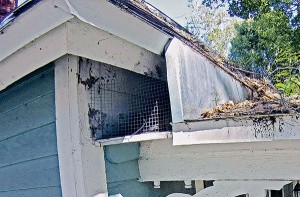
This photo, taken from a camera mounted to a pole two stories below, shows improperly installed barrier wire mesh. Photo: Jeff McGovern
A good, comprehensive training program offers education on bird biology, what attracts birds to certain areas or features, control methods, site evaluation, safety and sanitation, and practical sessions on bidding, proposal writing and marketing. It will help you understand the varied aspects of the business and decide if the degree of involvement makes sense for a business.
A good training program teaches PMPs to evaluate population pressure and appropriate product choices and placement. The ubiquitous misuse of bird spikes is a case in point. Bird spikes are a wonderful device and appropriate in a medium-pressure/non-nesting situation. Sadly, because it’s low-cost and easily installed (cable ties, caulk and duct tape) it has become the go-to product for DIYers, handymen and property managers. It’s often installed indiscriminately without an adequate overall plan, which is where a comprehensive training program teaches the PMP to establish a perimeter and identify zones.
Where are the comfort zones? A hangout zone is treated differently than a nesting zone. Target birds scoping out the place as a possible nesting area. By proactively deterring them, they won’t be waiting to fill the void left by the removal of the existing population.
Visual deterrents with reflective material that flash and move, impair a bird’s vision. Audio deterrents range from recorded predator calls that repel to sparrow songs that lure birds into traps. Are there roosting trees nearby? There’s a version of electrified mesh track made for on-tree installation to stop roosting and its associated damage. Correct installation of bird wires, grid nets and electrified mesh track is critical to the safety of target and nontarget species.
For interior birds, hands-on practice with mist nets is a must. Practice is essential. If the work is performed in front of staff and customers, be prepared for interference. It’s not unusual to find a destroyed mist net because a customer or employee felt sorry for the captured bird and freed it.
Some sites require a nontraditional, but simple solution. We once serviced a big box store with a coffee station for customers just inside the front door. As people lingered, chatted and got their coffee, the automatic doors stayed open and opportunistic sparrows took advantage of the opportunity. The solution was to move the coffee station away from the door. Good training helps a PMP see past product placement, assess the activity and address the problem.
Where do you find this kind of training? Bird product companies and pest control distributors offer support for their products and training services. Investigate, call and ask questions. Decide which one accommodates your needs and business model. Don’t be afraid to investigate sources outside the immediate area or challenge the status quo. Like many areas of pest control work, you want to “be the something different” to succeed.
Choose tools wisely
The best tool in your bird-control arsenal is establishing a good relationship with state and local wildlife officials. The federal Migratory Bird Treaty Act of 1918 is clear. However, state and local governments have developed more restrictions in some areas. Making friends with your state and local officials can be invaluable. They can help determine lawful and effective ways to handle nuisance birds, especially when dealing with a protected species.
Tools for bird work begin with basic PMP equipment: a flashlight; personal protective equipment (PPE) that includes a hat, safety glasses, sunglasses, gloves, non-slip boots, and covered arms and legs; binoculars; ladders and a dust mask. Additional tools depend on the type of services you offer.
If you plan to provide interior capture and trapping services, you’ll need mist nets with poles (available as kits through bird supply and pest control distributors), a laser pointer, strobe light, and an assortment of live traps. There is a large variety of traps from which to choose. Deciding on the right one is largely determined by bird size and the number of birds to be captured. Often, experimentation is needed to determine the most suitable trap for a particular site. To deter interior penetration, entry points must be identified and remediated. This can range from permanent repairs to exclusion netting and gel repellents.
Once the birds are captured and removed from the site, a plan should be in place for what comes next. If they’re to be released, the release site should be at least 30 miles from the capture site. Some birds instinctively home in on their natal site and will return to the capture site too quickly if released too close. If they’re to be euthanized, it should be done humanely in a prepared kill chamber.
For exterior work, tools – including a drill, a hammer and wire cutters – are needed to install grid nets, exclusion netting, electrified track, spikes, bird wire, visual and audio repellents, and traps. A measuring device (and the skill to use it correctly) is critical to determine supplies and pricing. One new tool worth considering is a rugged action-video camera that features Bluetooth to connect to a smartphone. The camera can be fastened securely to the end of a window-washing pole, which allows a PMP to access details not visible from the ground or aerial photos. As with interior work, a plan for the disposal of captured birds must be in place.
Another bird control niche is chemical management. Some chemicals are benign, such as birth control placed in pigeon feed to inhibit egg development, or a sprayed or granular roll-on repellent used in food areas for the Canada goose. The more active types overstimulate a bird’s cardiovascular system, causing it to act unusually and be avoided by the rest of the flock. Because of the nature of the products, the labels make it clear that death can occur. It’s important to understand the risk involved placing these products in the wrong setting. The purpose of these products is to decrease the population numbers in a specific, definable area.
Cleanup and conclusions
Cleanup can be a lucrative aspect of bird work. Bird droppings are considered biohazardous waste and must be handled and disposed of accordingly. Equipment for this work includes sprayers for wetting down surfaces, pressure washers, shovels for scooping and bags for removal. Use specialized detergents according to the label to neutralize and break down bird droppings without environmental harm. Cleanup is necessary before the installation of any bird control products (see “5 steps for proper cleanup,” below).
The attention to detail required in a large area makes bird work lucrative. One hurdle is managing sticker shock. Some providers cut everything to the bare bones by devaluing the labor charges, skimping on the time necessary to do the job right, or relying on one product (usually the least expensive). Often, the outcome is substandard results for the client and a dissatisfied PMP.
It’s better to break the job into phases, with specific goals and stated outcomes for each phase. When a client sees he’s getting his money’s worth, he’s more eager to move onto the next phase. The key is sculpting the phase so the client can see its tangible results, which maintains the time and quality the PMP is looking for, and gives the client affordable quality service — and relief.
Bird work opportunities develop with the construction of every new building, bridge, park and recreation area. Deciding to take advantage of these opportunities requires a clear-eyed look at the stamina and capabilities of a company and the rigorous requirements of the work. Training helps a business owner see the spectrum of factors and decide which parts fit his business. It’s a niche that can elevate your business to new heights.
5 steps for proper cleanup
Some bird management companies have a crew and a truck dedicated to cleaning. They pick up extra work cleaning and prepping for other companies before installation or construction. If adding this service appeals to you, consider this five-pronged approach:
1. Moisten and loosen debris. Dried bird droppings become airborne when disturbed. It’s important they’re wetted down to eliminate risk. Wetting with a bactericide also will kill bacteria. It might be necessary to wet down surfaces repeatedly if there’s a heavy accumulation of droppings.
2. Scoop and collect. It’s almost impossible to wash away large amounts of droppings. They must be scooped up, removed in bags and disposed of properly. Contact your local waste facility about the disposal of bird droppings.
3. Wash surfaces. Once the majority of waste is removed, the building surface should be washed with water, detergent and scrub brushes. Pressure washing is also a viable alternative. Using a product with a live enzyme removes stubborn waste.
4. Sanitize surfaces. Once the waste is removed and the building looks clean, finish the job properly by applying a bactericide to sanitize the surfaces and leave a clean smell.
5. Clean around the site. The building is clean, but the sidewalk is a mess. Finish the job properly.
You can reach the Kate and Jeff McGovern at jeffreymcgovern@mindspring.com.
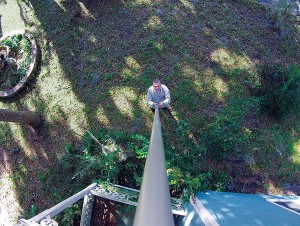
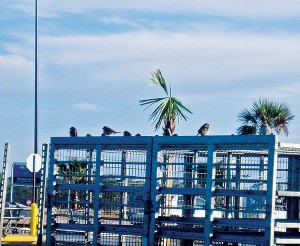
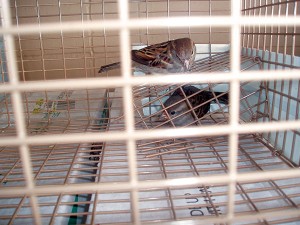
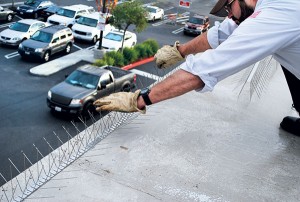
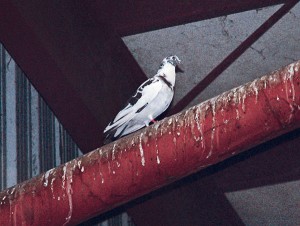
Leave A Comment